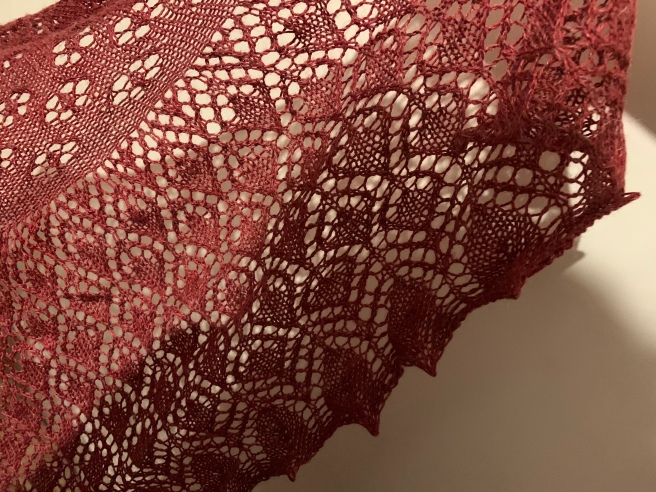After a tiny shawl in laceweight with nupps I wanted something a bit more substantial. Meet Kassiani.
This is a lovely semi-circular shawl with a half-pi construction. That makes it a joy to knit, with each section providing an easy level of reward and a pleasing sense of progress before moving on to the next.
The factor that was new for me with this one was the yarn- it’s Triskelion Mona 4 ply, which is a blend of alpaca, silk and linen. Linen is a notoriously marmite fibre to work with. Some people love it for its drape and rustic heritage, but others report it can be a pain to work with, feeling papery and rough in the hands, even if after blocking it apparently turns soft and silky.
This blend with alpaca and silk was a great way of dipping my toe into the water of working with linen. The linen adds structure and heft to the alpaca, and compliments the drape and colour saturation of the silk. The result is a shawl that drapes well and that I’m confident will hold its shape and blocking for some time to come. The blend of fibres gives it a rustic, slightly tweedy effect that adds to the knitted result. This is definitely not a yarn to be using where you want a delicate result.
This was a two-skein pattern, so it makes a substantial shawl. The semi-circle is a practical shape that means it can double up as a scarf as well as a shawl.
























